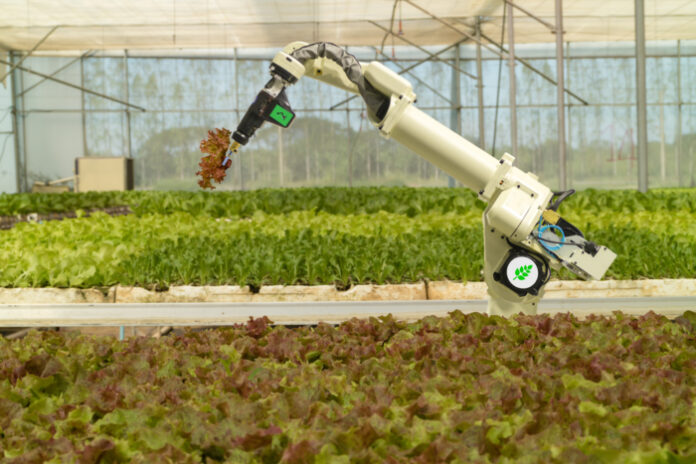Sustainability is increasingly becoming a primary concern for farmers and their land. By implementing sustainable farming practices, farmers can expect to yield more bountiful rewards than traditional methods. Not only do these processes result in greater yields of healthy harvests, but they also greatly reduce environmental damage, such as soil erosion and loss of biodiversity. This allows for greater bio-diversity in crops, aiding in the continued success of farmers.
Furthermore, sustainable farming operations often demand fewer resources than conventional ones, making them not only better for the environment but more cost-effective as well. In addition, sustainable farming products are highly sought after in the market due to their decreased environmental impact, allowing farmers to easily derive considerable profits from their operations. Here are some of the best ways to make farming more profitable and greener:
1. Conservation agriculture
Conservation agriculture maintains soil health, retains moisture, and reduces the detrimental effects of traditional farming techniques on the environment. This type of farming is focused on minimizing soil disturbance, maintaining a permanent soil cover of vegetation or crop residue, and integrating cropping and off-season activities into a single system. Through the use of no-till planting, various crops, and trapping leftover biomass to improve the soil’s fertility levels and combat weeds, farmers can see both short-term and long-term benefits from sustainable agricultural practices.
The improved soils allow for drought-resistant crops with deeper root systems and higher yields which is advantageous from an economic standpoint as well as in terms of environmental protection. Additionally, conservation agriculture can also help protect farmers from effects related to climate change such as insect infestations and more destructive weather conditions.
2. Precision farming
Precision farming is a powerful tool that farmers can use to increase profits and productivity. By utilizing precise data, such as soil composition, crop health, and moisture levels, farmers can optimize the amount of water, fertilizer, and seed used in their fields. This allows them to maximize yields while preserving resources, resulting in lower costs and higher profits.
Procedural technologies, such as GPS-based guidance systems or robotic equipment, further increase efficiency in tilling, planting, and harvesting crops. The integration of these technologies allows farmers to better manage their land and make informed decisions that add value to their business.
3. Agroforestry
Agroforestry is an innovative type of land management that provides farmers with a variety of ecological and economic benefits, both for farming communities and the environment. By incorporating trees and other plants into agricultural ecosystems, farmers can enhance nutrient cycling, conserve soils, sequester carbon, diversify crop rotations, promote biodiversity, and increase yields across multiple products.
Investing in agroforestry technologies and practices can help smallholder farmers to gain access to new revenue streams from markets for carbon credits and other high-value goods while maintaining their existing agricultural activities. In this way, they can make sustainable farming not only more profitable but also more resilient to shocks such as droughts and floods.
4. Vermicomposting
Vermicomposting is an efficient way for farmers to merge sustainable farming and profitability. By using worms to break down organic matter, a natural compost is created that can be applied to fields as fertilizer. This increases the health of the soil, leading to higher crop yields. There is also an abundance of microbial organisms beneficial to crops that are released in vermicomposting that cannot be found with traditional methods of composting.
The use of vermicomposting also ensures that farms use minimal chemical agents in their farming practices, which benefits wildlife and human health by reducing exposure to toxic chemicals. This environmentally-friendly technique of composting has already proven itself profitable for many farms worldwide, as it produces quality fertilizers for a low cost of production compared to chemical agents.
5. Floating farming
Floating farming involves growing plants and crops in floating rafts on a body of water such as a shallow lake, river, or ocean. Its benefits include fewer pests and diseases due to limited contact with land-based animals and plants, more efficient use of water as runoff from the farmland evaporates less quickly over water than over land, increased production potential due to the easy supply of nutrients, year-round plantations possible in warm climates and the additional real estate available for growing plants that would normally be too far away from shore. In addition, a floating farm can potentially be quite profitable for farmers since its overall cost of construction is lower than other traditional farming methods.
6. Permaculture farming
Permaculture farming mimics natural ecosystems in order to increase yields and improve the health of the land. By using strategies such as companion planting, mulching, and recycling greywater, permaculture can be used to create a closed-loop system that is beneficial to the environment and profitable for farmers. According to Natural Stockcare, this approach minimizes external inputs into the ecosystem and ensures that recycled nutrients are available to future crops, keeping them healthy and producing high yields over time.
Additionally, permaculture farms typically have higher levels of water infiltration and retention than conventional forms of agriculture. By preserving soil moisture, these farms are more resilient to drought which helps counterbalance unpredictable weather patterns caused by climate change. The combination of higher production yields, greater water conservation, and resilience make permaculture farming a fantastic way for farmers to work towards sustainable food production while still achieving profits for their operations.
Differentiating your farm products through eco-friendly and sustainable practices not only allows you to command a higher price point in many instances but also helps you to tap into new markets that are passionate about supporting responsible businesses. If you’re looking for ways to make your farming operation more profitable, going green is a great place to start.
Find a Home-Based Business to Start-Up >>> Hundreds of Business Listings.

















































